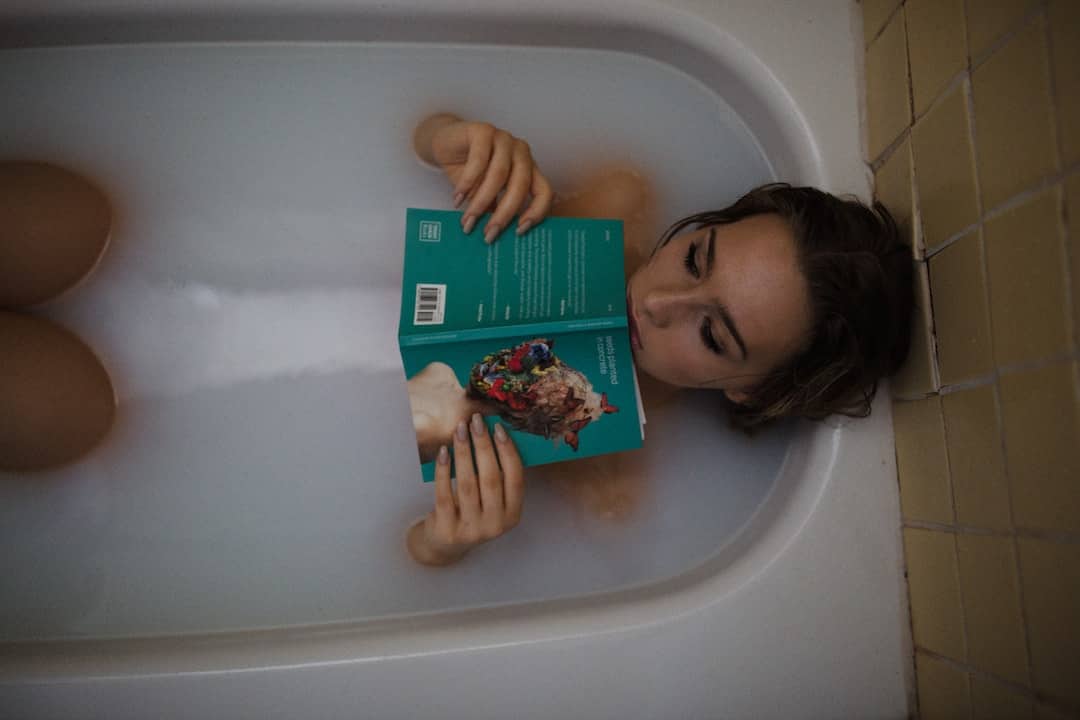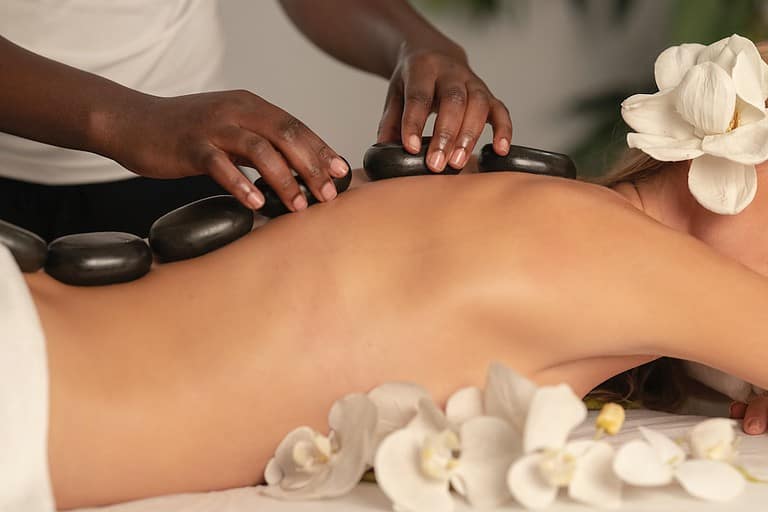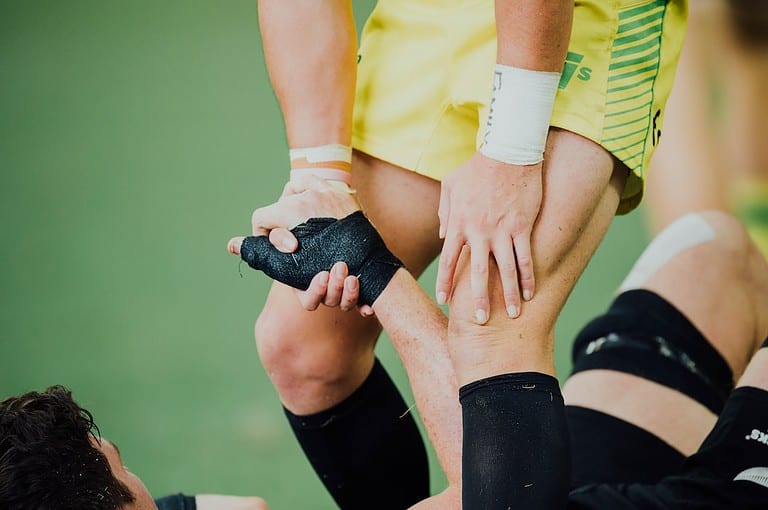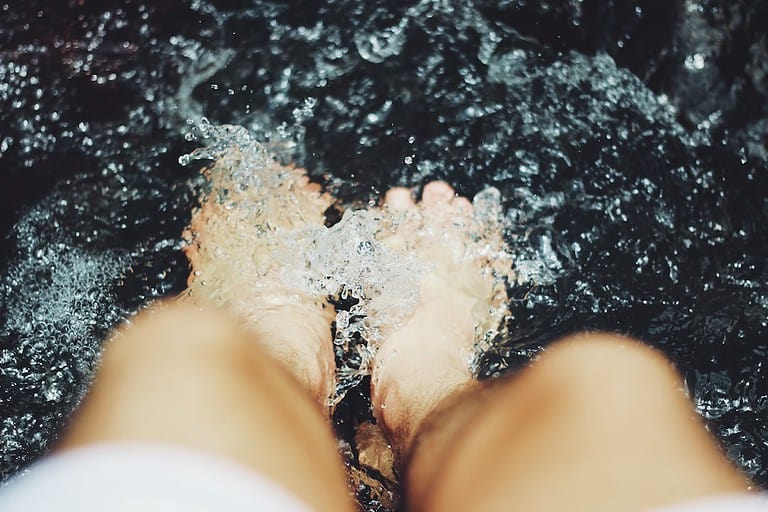What Is Contrast Bath Therapy? Soothe and Stimulate The Body
What is contrast bath therapy? This type of hydrotherapy has been used for centuries to promote relaxation and reduce pain. By alternating between hot and cold water, the body can experience both stimulation and soothing effects which may lead to improved circulation, stress relief, muscle recovery, reduced inflammation, detoxification as well as other health benefits.
There are many types of contrast baths — from simple warm/cold showers to full-body immersion treatments — and it’s important to understand safety considerations before beginning this practice. In this blog post, we will explore what is contrast bath therapy along with tips on how you can maximize its potential for your overall wellness.
Table of Contents
What is Contrast Bath Therapy?
Contrast bath therapy has been used in traditional medicine and is now gaining popularity among modern families looking for actionable ways to be healthier and more independent.
What is contrast bath therapy exactly?
Contrast bath therapy is the practice of alternating between hot and cold water immersion to stimulate circulation, reduce inflammation, and promote healing. The process typically involves immersing oneself in either warm or cool water for two minutes before switching temperatures. This cycle can be repeated several times depending on individual preference or medical advice.
There are many potential benefits associated with contrast bath therapy.
- Improved blood flow throughout the body.
- Reduced muscle tension.
- Increased energy levels.
- Enhanced immune system function.
- Improved sleep quality.
- Reduced stress levels.
- Decreased pain symptoms such as headaches or joint pain caused by arthritis or other chronic conditions.
Additionally, contrast water therapy may help improve overall skin health by promoting collagen production which helps keep skin firm and supple while reducing signs of aging like wrinkles or age spots.
Now let’s take a look at the different types of contrast baths and how contrast bath therapy works.
Types of Contrast Therapy
Cold Therapy Water Immersion
Cold water immersion is a type of contrast bath therapy that involves submerging the body in cold water for a short period of time. A cold bath can help reduce inflammation, improve circulation, and promote healing. It can also be used to treat muscle soreness and fatigue after exercise or physical activity.
To perform this type of hydrotherapy, fill a tub with cold water (around 55°F) and immerse your body up to your neck for 1-3 minutes at a time.
Hot and Cold Alternating Water Immersion
Hot and cold alternating water immersion is another form of contrast bath therapy that involves alternating between heat therapy and cold therapy several times over the course of 10-15 minutes. This type of hydrotherapy helps stimulate blood flow throughout the body while reducing inflammation and promoting relaxation.
To perform this type of contrast bath therapy, fill two tubs with hot (105°F) and cold (55°F) water respectively then alternate between them every 30 seconds or so for 10-15 minutes total.
Hot and Cold Sequential Water Immersion
Hot and cold sequential water immersion is similar to hot/cold alternating but instead focuses on using both temperatures consecutively rather than simultaneously. This form of hydrotherapy helps increase circulation while providing relief from muscle pain, tension, stiffness, stress, anxiety, and depression.
To perform this type of contrast bath therapy, start by immersing yourself in a hot bath (105°F) for 3-5 minutes followed by immersing yourself in cold water (55°F) for 30 seconds to 1 minute before repeating the process 2 more times for a total duration around 10-15 minutes each session.
Epsom Soaks
Epsom salt soaks are an easy way to get some therapeutic benefits from hydrotherapy without having to use any specialized equipment or tools. Epsom salt contains magnesium sulfate which has been shown to have numerous health benefits including improved sleep quality, reduced stress levels, increased energy levels, better digestion, and improved skin health.
To perform an Epsom salt soak, simply add two cups of Epsom salt into warm (around 100°F) bathwater then soak your entire body up until your neck area for 15 to 20 minutes per session.
While contrast baths are a great way to help the modern family become healthier and more independent, it is also important to understand safety considerations before beginning any type of physical therapy.
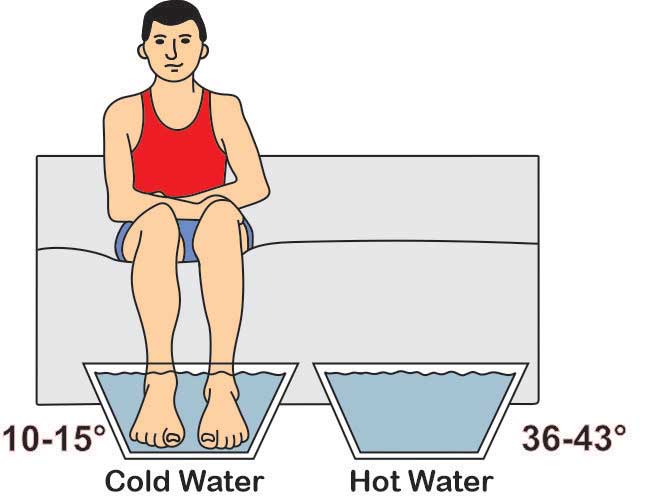
(Source)
Safety Considerations for Contrast Bath Therapy
When performing contrast bath therapy, it is important to take safety precautions. Temperature guidelines for hot and cold water immersions should be followed in order to ensure that the treatment is effective without causing any harm or discomfort.
For heat therapy, the temperature should not exceed 104°F (40°C). For ice baths, the temperature should not drop below 60°F (15.5°C).
Time guidelines for each type of bath must also be taken into consideration when performing contrast bath therapy.
Hot baths are typically recommended to last between 5-10 minutes while ice baths are generally advised to last no longer than 1 minute. Both types of baths can be repeated several times throughout a single session as long as proper time intervals are observed in between each cycle.
Contraindications for contrast bath therapy must also be considered before beginning a session.
People with heart conditions, high blood pressure, diabetes, or other medical issues should consult their doctor prior to engaging in this type of treatment due to potential risks associated with sudden changes in body temperature.
Pregnant women and children under 18 years old should also avoid contrast baths unless specifically instructed by their physician or healthcare provider.
It is important to be aware of safety considerations when performing contrast bath therapy, such as temperature and time guidelines for hot and cold water immersions. To maximize the benefits of this therapy, consider the frequency of use, hydration before and after treatment, and diet considerations.
Tips for Maximizing the Benefits of Contrast Bath Therapy
The frequency with which you perform contrast baths will depend on your individual needs. Generally speaking, it is recommended to start out slowly with one session per week for two weeks and then gradually increase the number of sessions up to three times per week if desired.
Be sure to take breaks in between sessions so that your body can rest and recover from any potential soreness or fatigue caused by the therapy.
Proper hydration before and after contrast bath therapy is essential for optimal results. Make sure you drink plenty of water before and after your session to help flush toxins from your system more quickly. Electrolyte-rich drinks like coconut water are great for replenishing lost minerals due to sweating during treatments.
Eating healthy foods prior to performing contrast baths can help prevent nausea or dizziness due to low blood sugar levels
Conclusion
What is contrast bath therapy? This type of hot-cold hydrotherapy can be used to treat a variety of conditions, from muscle pain to stress relief. With proper preparation and guidance, you can maximize the benefits of this treatment and enjoy its many therapeutic effects.
Contrast bath therapy may just be the perfect addition to your self-care routine!
Are you looking for a way to improve your family’s health and well-being? Look no further than contrast bath therapy! Contrast baths provide an easy, accessible, and effective solution for relieving stress, improving circulation, and increasing energy levels.
By alternating between hot water (up to 104 degrees Fahrenheit) with cold water (as low as 55 degrees Fahrenheit), this type of hydrotherapy helps the body relax while stimulating metabolic processes.
Smart Living Now provides helpful resources on how to get started with contrast bath therapy so that your family can be healthier today!

